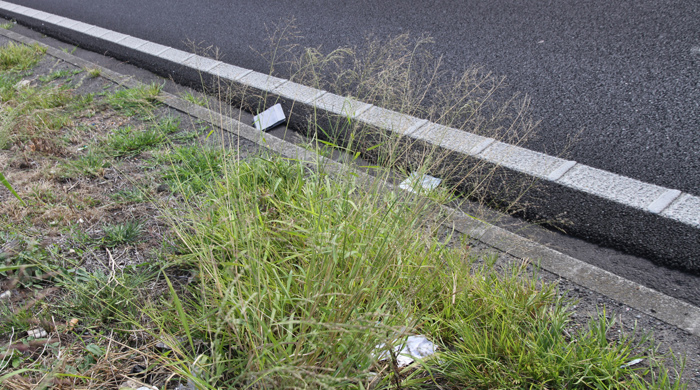Megathyrsus maximus syn. Panicum maximum
Guinea grass
Also known as:
Green panic grass, elephant grass, buffelgrass
Family: Poaceae
Origin: Africa

Regional Pest Management Plan (RPMP) status
- National Pest Plant Accord Species
- Whole region — Sustained control
General description
Large perennial grass < 3.5 m tall. Rhizomes are short. Stems are erect. Leaves are light green/blue-green. Flowers are borne in reddish spikelets.
What you need to know
To help protect our environment:
- You must not breed, distribute, release or sell Guinea grass. As Guinea grass is a National Pest Plant Accord species, these restrictions apply within the Auckland region and across the whole of New Zealand.
- You must not plant Guinea grass within the Auckland region, unless you are transferring an existing plant on your land to another location within the boundaries of the same property.
- You must destroy any Guinea grass on land that you occupy if it has been planted in breach of the above rules and you are directed to do so by an authorised person.
Habitats
Open areas, grassland, riparian habitat, disturbed areas, crops, orchards, vineyards, roadsides, scrub, gardens.
Dispersal
Seeds dispersed by birds and wind. Vegetative spread from stolons.
Impact on environment
Aggressive invader of crops, orchards and vineyards. Acts as a host for insect pests and diseases of cereal crops. Strong competitor. Potential fire hazard that can increase fire severity and spread.
Control
Site Management
Follow up treated areas 3 times per year. Encourage natural regeneration of native plants or replant treated areas where possible after 2-3 treatments to establish dense ground cover and minimise reinvasion.
Recommended approaches
Physical control
Method: Dig out.
Plant parts requiring disposal: Seeds and stolons.
Disposal options: Remove to greenwaste or landfill if practical.
Biocontrol
Biocontrol is currently not available for this species.
Community agrichemical control recommendations
No qualifications: Foliar spray with 100ml glyphosate green per 10L of water.
Certified Handler/Experienced agrichemical user: Foliar spray with 100ml glyphosate green per 10L of water and 20ml penetrant.
Caution: When using any herbicide or pesticide please read the label thoroughly to ensure that all instructions and safety requirements are followed.





